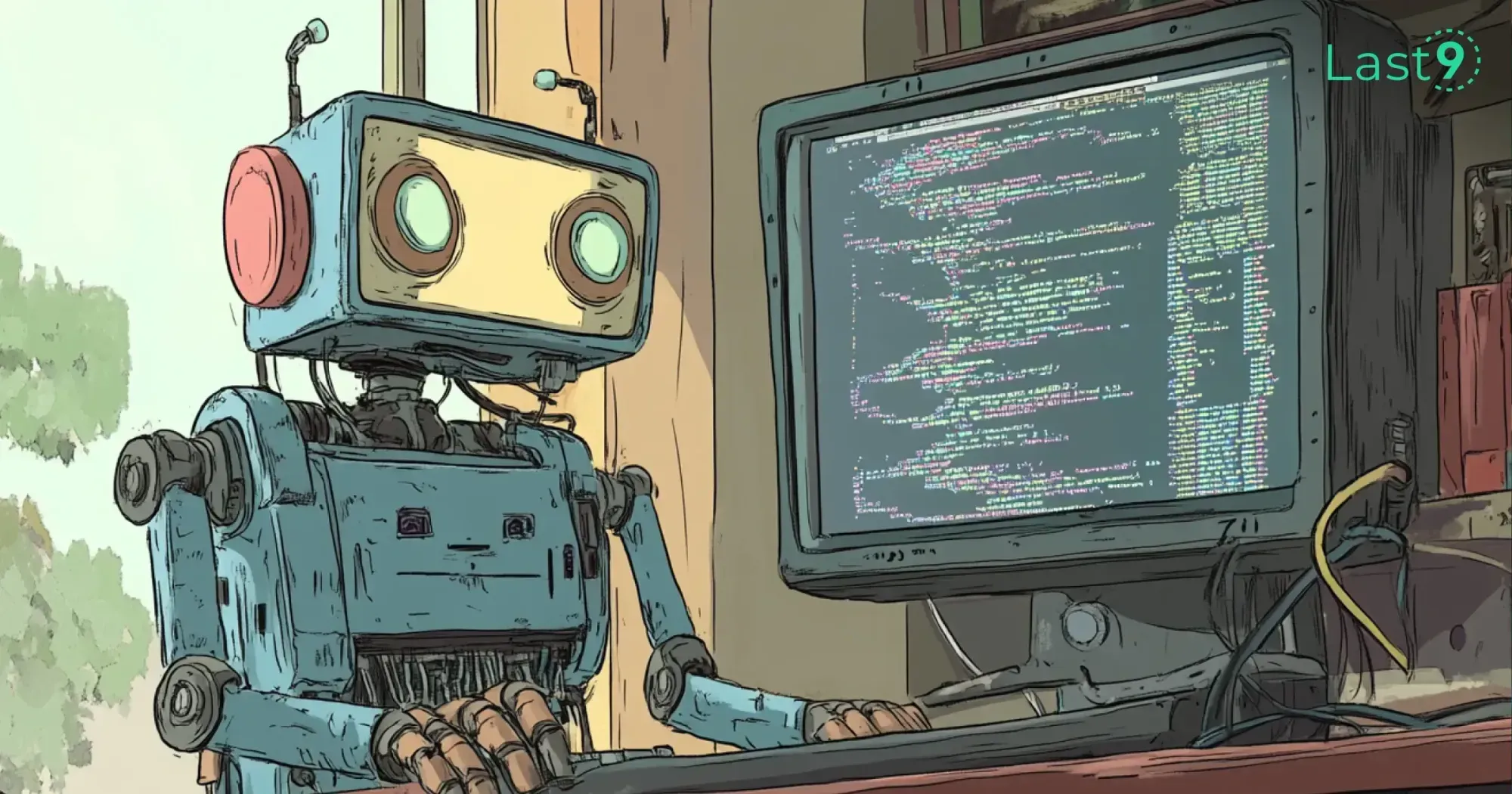When it comes to automating repetitive tasks on your system, cron jobs are your go-to solution. While cron jobs are most commonly associated with Linux and Unix systems, Windows users often seek similar functionality.
If you’re wondering how to implement cron jobs in Windows, you’re in the right place! In this guide, we’ll walk you through setting up and managing cron jobs on Windows, ensuring you can automate tasks effectively without a hitch.
What is a Cron Job?
A cron job is a scheduled task that runs automatically at specified intervals. Originating from the Unix/Linux systems, cron jobs are typically used for tasks like system maintenance, backups, or other repetitive actions.
In Windows, while cron jobs aren’t natively supported, there are equivalent tools that make it easy to schedule tasks in a way that mirrors the cron functionality on Linux.
How Cron Jobs Work in Windows
On Windows, the cron job concept is implemented through the Task Scheduler. This built-in tool enables you to automate the execution of scripts, applications, or processes based on specific triggers, much like the cron daemon does in Linux.
The Task Scheduler offers a wide range of options for scheduling tasks to run at predetermined times, making it a powerful utility for automating regular tasks such as backups, log rotations, or data processing.
Setting Up Cron Jobs in Windows Using Task Scheduler
While the term "cron job" may be associated with Linux, Windows has its method for automation—Task Scheduler.
Let’s break down the steps to set up a cron-like task in Windows:
Step 1: Open Task Scheduler
To begin, you’ll need to access the Task Scheduler. Here’s how:
- Press
Windows Key + Rto open the Run dialog. - Type
taskschd.mscand press Enter. This will launch the Task Scheduler.
Step 2: Create a New Task
Now that you have the Task Scheduler open, you can create a new task:
- In the right-hand pane, click on Create Task.
- In the "General" tab, give your task a name and description (for example, “Backup Files”).
Step 3: Define the Trigger
Triggers determine when the task will run. You can set up the task to run at a specific time, on startup, or based on other conditions. Here’s how to define a trigger:
- Go to the Triggers tab and click New.
- Choose the type of trigger (e.g., “Daily,” “Weekly,” “On startup”).
- Set the schedule to your preference. For example, you can schedule a backup to run every day at midnight or every Monday at 8 AM.
Step 4: Define the Action
An action is what happens when the task is triggered. You can choose to run a program, send an email, or display a message. To run a script, for example:
- Go to the Actions tab and click New.
- In the “Action” field, choose Start a program.
- Browse to the script or application you want to run (e.g., a PowerShell script for file backups).
Step 5: Set Conditions and Settings
If needed, you can fine-tune the conditions under which the task will run. For example, you can specify that the task should only run if the computer is idle or if it’s on AC power.
These options are available under the Conditions and Settings tabs.
Step 6: Save and Test the Task
Once you’ve configured the task, click OK to save it. You can also test it by right-clicking on the task and selecting Run to see if it triggers as expected.
Creating Cron Jobs Through Command Prompt
While Task Scheduler and PowerShell are the go-to methods for scheduling tasks in Windows, you can also create cron jobs through the Command Prompt using the SCHTASKS command.
This provides a more direct, scriptable method for scheduling tasks without the need for a graphical interface.
Below, we’ll guide you through the process of creating cron-like jobs in Windows via the Command Prompt.
Step 1: Open the Command Prompt
To begin, you need to access the Command Prompt with administrative privileges:
- Press
Windows Key + Xand select Command Prompt (Admin) or Windows PowerShell (Admin) from the menu. - Alternatively, you can search for cmd in the Start menu, right-click it, and select Run as administrator.
Step 2: Use the SCHTASKS Command
Windows’ SCHTASKS utility allows you to create, delete, configure, or display scheduled tasks. To create a new task (cron job), use the following syntax:
SCHTASKS /Create /SC [schedule] /TN "[task_name]" /TR "[task_to_run]" /ST [start_time] /FHere’s a breakdown of the options used in the command:
/Create: Tells Windows to create a new task./SC [schedule]: Defines the frequency of the task. Possible options include:MINUTE(every X minutes)HOURLY(every X hours)DAILY(every day)WEEKLY(every week)MONTHLY(every month)
/TN "[task_name]": The name you want to assign to the task./TR "[task_to_run]": The exact command or script you want to run (e.g., a batch file or executable)./ST [start_time]: The time to start the task, inHH:MMformat./F: Forces the task creation without any prompts for confirmation.
Example: Schedule a Daily Backup Task
Let’s say you want to schedule a daily backup of your C:\MyFiles folder using a batch file. The batch file is located at C:\scripts\backup.bat, and you want it to run every day at 2:00 AM.
The command would look like this:
SCHTASKS /Create /SC DAILY /TN "Daily Backup" /TR "C:\scripts\backup.bat" /ST 02:00 /FStep 3: Check the Task
After creating your task, you can verify that it’s been scheduled correctly by running the following command:
SCHTASKS /Query /TN "Daily Backup"This will display details about the "Daily Backup" task, including its next scheduled run time.
Step 4: Edit or Delete the Task
If you need to modify or remove the task later, you can use the following commands:
- Edit: To change a task, you’ll have to delete the existing one and recreate it with new parameters.
- Delete: Use the command below to remove the task:
SCHTASKS /Delete /TN "Daily Backup" /FAdvantages of Using Command Prompt for Cron Jobs
- Scriptability: The
SCHTASKScommand is scriptable, which makes it ideal for automation and running cron jobs through batch scripts. - No GUI: You don’t need to interact with a graphical interface, making it quicker for those who prefer working with command-line tools.
- Lightweight: It’s a more lightweight solution compared to Task Scheduler, especially for simple tasks that don’t need advanced scheduling options.
Limitations
- Basic Options: While the
SCHTASKScommand is great for creating basic scheduled tasks, but it doesn’t offer the full flexibility and advanced features that Task Scheduler or PowerShell provides. - Lack of Triggers: You can’t set specific triggers like "task starts when the computer is idle," which is possible in Task Scheduler.
How to Edit Existing Cron Jobs in Windows
Editing cron jobs in Windows is essential when you need to adjust the schedule, modify the task, or update the command being executed.
Depending on your method of creating cron jobs, there are different ways to edit them.
Let’s explore how to do this through Task Scheduler, PowerShell, and Command Prompt.
1. Editing Cron Jobs via Task Scheduler
Task Scheduler provides a graphical interface to manage and edit scheduled tasks.
Here’s how you can modify an existing cron job using Task Scheduler:
Steps:
- Press
Windows Key + Sand search for Task Scheduler. - In the Task Scheduler window, expand the Task Scheduler Library on the left-hand side to view all scheduled tasks.
- Locate the task you want to edit in the list. You can scroll through or use the search bar.
- Right-click on the task and select Properties.
- In the Properties window, you can adjust several settings:
- Triggers: Modify when the task should run (e.g., daily, weekly, at startup).
- Actions: Change the command or script that the task runs.
- Conditions: Set conditions under which the task will run (e.g., only when the computer is idle).
- Settings: Adjust advanced settings, like how the task should behave if it’s missed or fails.
- After making the necessary changes, click OK to save your edits.
Example:
If you need to change the time for a daily backup task, just modify the Trigger and update the start time to reflect the new schedule.
2. Editing Cron Jobs via PowerShell
To edit existing scheduled tasks using PowerShell, you can utilize the Get-ScheduledTask and Set-ScheduledTask cmdlets.
This method is ideal for automation or when you prefer working within a scriptable environment.
Steps:
- Open PowerShell as Administrator:
PressWindows Key + Xand select Windows PowerShell (Admin). - List the Scheduled Tasks:
Run the following command to see all scheduled tasks:
Get-ScheduledTask- Identify the Task to Modify:
Review the output to find the task you want to modify or search for it specifically. - Modify the Task's Properties:
Use theSet-ScheduledTaskcmdlet to change the task’s properties. For example, if you want to update the trigger and action of a task, run:
Set-ScheduledTask -TaskName "Daily Backup" -Trigger (New-ScheduledTaskTrigger -Daily -At "03:00AM") -Action (New-ScheduledTaskAction -Execute "C:\scripts\new_backup.bat")This command updates the "Daily Backup" task to run daily at 3:00 AM and executes the new backup script.
Example:
If the backup task needs to run at a different time or with a new script, simply modify the trigger and action accordingly.
3. Editing Cron Jobs via Command Prompt
If you created your cron job with the SCHTASKS command in Command Prompt, you cannot directly edit an existing task.
Instead, you’ll need to delete the task and recreate it with the updated parameters. Here's how to do it:
Steps:
- Open Command Prompt as Administrator by pressing
Windows Key + Xand selecting Command Prompt (Admin) or Windows PowerShell (Admin). - To view existing tasks, run:
SCHTASKS /Query- To delete an existing task, use:
SCHTASKS /Delete /TN "TaskName" /FOnce the old task is deleted, create the task again with the updated parameters. For example:
SCHTASKS /Create /SC DAILY /TN "Daily Backup" /TR "C:\scripts\new_backup.bat" /ST 03:00 /FExample:
To change the time or script associated with a backup task, you first need to delete the current task and create a new one with the updated time or script path.
Key Points to Remember:
- Task Scheduler offers the easiest way to edit tasks using a graphical interface, making it ideal for users who prefer to interact with a GUI.
- PowerShell provides a powerful scripting option for editing tasks, which is particularly useful for automating the process or managing multiple tasks.
- Command Prompt using
SCHTASKSrequires you to delete and recreate tasks, as there’s no direct way to edit them once created.
Troubleshooting Common Issues with Cron Jobs in Windows
If you encounter issues with your scheduled tasks, here are a few troubleshooting tips:
- Check Task History: The Task Scheduler logs detailed histories of each task. If your task isn’t running as expected, check the history to find out what went wrong.
- Permissions Issues: Make sure the task is set to run with the correct user permissions. If it requires administrator access, ensure that the “Run with highest privileges” box is checked.
- Task Not Triggering: Double-check the trigger conditions to ensure they are set correctly. If the task relies on specific conditions like the computer being idle or connected to AC power, make sure those conditions are met.
Benefits of Using Cron Jobs
Cron jobs are a great way to automate repetitive tasks and keep things running smoothly.
Let’s take a look at some of the key benefits:
1. Automation of Repetitive Tasks
Cron jobs help automate tasks that you’d otherwise have to do manually. Things like running backups, cleaning up files, or updating software can all be set up to run automatically.
This means you don’t have to worry about remembering to do them, and you can focus your energy on more important tasks.
2. Consistency and Reliability
Once a cron job is set up, it will run like clockwork. You don’t have to worry about forgetting or missing a task.
This consistency is especially important for tasks that need to be done regularly, like backups or log rotations. With cron jobs, you can trust that everything will happen when it’s supposed to.
3. Better System Maintenance
System maintenance tasks are crucial for keeping your system in good shape. Things like clearing temporary files, checking disk space, or rotating logs can all be handled by cron jobs.
Setting these up to run automatically means you won’t forget to do them, and your system will stay in top condition with minimal effort on your part.
4. Cost Efficiency
Automating tasks with cron jobs can save both time and money. When tasks are handled automatically, your team doesn’t have to spend time on them, allowing them to focus on other priorities.
It also helps optimize resources, as tasks can be scheduled during off-hours, reducing any strain on your system during peak times.
5. Flexibility and Customization
Cron jobs are highly flexible. You can schedule them to run at virtually any interval—whether that’s every minute, hour, day, or week.
You can also set up multiple tasks that run together or at different times, depending on your needs. This gives you full control over how and when tasks are carried out.
6. Efficient Resource Management
For larger systems, cron jobs are an excellent way to distribute tasks and manage resources. You can schedule heavy tasks to run during off-peak hours, making sure your system isn’t overwhelmed when it’s in use.
This can help keep everything running smoothly without affecting the overall performance.
7. Improved Security
Cron jobs are perfect for automating security-related tasks like running antivirus scans, applying patches, or monitoring system logs.
By scheduling these tasks to run regularly, you can ensure that your system stays secure and up to date without needing to remember to do them yourself.
8. Boosted Productivity
By automating simple, repetitive tasks, cron jobs free up time for your team to focus on more meaningful work.
Instead of wasting time on routine jobs, your team can direct their attention to areas where their skills can make an impact, making your workflow much more efficient.
9. Easy Monitoring and Alerts
Cron jobs can be set up with logging or alert systems to keep track of their performance. If something goes wrong, you can get an alert right away, so you can take action quickly.
This makes it easy to ensure everything is running as planned and helps you troubleshoot if something doesn’t go as expected.
Conclusion
Cron jobs, typically associated with Linux, can also be implemented in Windows using Task Scheduler. This powerful tool allows users to automate a range of tasks, such as file backups, system maintenance, and software updates, without needing manual intervention.
With the steps provided in this guide, you'll be able to integrate cron jobs into your Windows environment and automate essential tasks effortlessly.
FAQs
What is a cron job in Windows?
A cron job in Windows refers to a scheduled task that automatically runs at specific intervals, such as daily, weekly, or hourly. While the term "cron job" originates from Linux/Unix, Windows offers similar functionality through tools like Task Scheduler, PowerShell, and Command Prompt with the SCHTASKS command.
How do I create a cron job in Windows?
You can create cron jobs in Windows using Task Scheduler, PowerShell, or the Command Prompt. For Task Scheduler, you can use the graphical interface to create and configure tasks. In PowerShell, the New-ScheduledTask cmdlet helps you create tasks programmatically, and in Command Prompt, the SCHTASKS command can be used to schedule tasks directly from the command line.
Can I run cron jobs automatically in the background?
Yes, Windows allows you to run cron jobs in the background. Task Scheduler, PowerShell, and Command Prompt all support running tasks in the background without requiring user interaction. Once set up, these tasks will run according to the schedule you define.
What’s the difference between Task Scheduler and PowerShell for cron jobs?
Task Scheduler offers a graphical interface, which is easy to use for scheduling tasks on the go. It provides a wide range of options for setting triggers, actions, and conditions. PowerShell, on the other hand, provides a more scriptable and automated approach. It’s perfect for those who prefer using command-line tools and for managing cron jobs at scale or through automation scripts.
Can I schedule tasks to run at specific times, like cron jobs in Linux?
Yes, both Task Scheduler and PowerShell allow you to schedule tasks to run at specific times or intervals, such as every day at 2:00 AM, every 5 minutes, or at startup. This mimics the flexibility of cron jobs in Linux, where you can specify exact times and recurrence patterns.
Can I run scripts or programs using cron jobs in Windows?
Absolutely! One of the main uses of cron jobs in Windows is to run scripts or programs automatically. You can schedule batch files, PowerShell scripts, executable programs, or even custom scripts written in other languages like Python or JavaScript.
How do I check if my cron job in Windows is working properly?
You can verify if your cron job is running correctly by checking the Task Scheduler for logs, viewing the output of scripts in their respective log files, or using the SCHTASKS /Query command to check the status of a task. If an issue arises, Task Scheduler also allows you to set up error handling or email notifications to alert you if something goes wrong.
What should I do if a cron job in Windows isn’t running as expected?
If your cron job isn’t running, first check the task’s settings in Task Scheduler, ensure that the conditions are right (e.g., triggers are set properly, and there are no conflicts). Also, check that the correct permissions are granted for the task to execute the specified command or script. If you're using PowerShell or Command Prompt, check for syntax errors or try running the task manually to see if it works outside the schedule.
Can I run cron jobs in Windows using the Command Prompt?
Yes, you can. Using the SCHTASKS command, you can create, modify, and manage scheduled tasks from the Command Prompt. This is a useful method for scripting and automating cron jobs, especially for more advanced users who prefer working in a command-line environment.
How do I delete or modify an existing cron job in Windows?
To delete or modify an existing cron job, you can either use Task Scheduler (for a graphical approach), PowerShell (with the Set-ScheduledTask cmdlet for modifications), or Command Prompt (by deleting the task with SCHTASKS /Delete and recreating it with new parameters).
Can I schedule a task in Windows to run periodically, like a cron job in Linux?
Yes, Windows allows you to schedule tasks to run at periodic intervals. With Task Scheduler, you can set up tasks to run at fixed intervals (e.g., hourly, daily, or weekly) or based on more complex conditions like system idle time. PowerShell also allows for detailed scheduling using the New-ScheduledTaskTrigger cmdlet.
What are some use cases for cron jobs in Windows?
Cron jobs in Windows are great for automating regular tasks like backups, system maintenance (e.g., disk cleanups or log rotations), software updates, and data syncing. You can also automate email reports, server monitoring, or any repetitive task that requires consistent execution.



